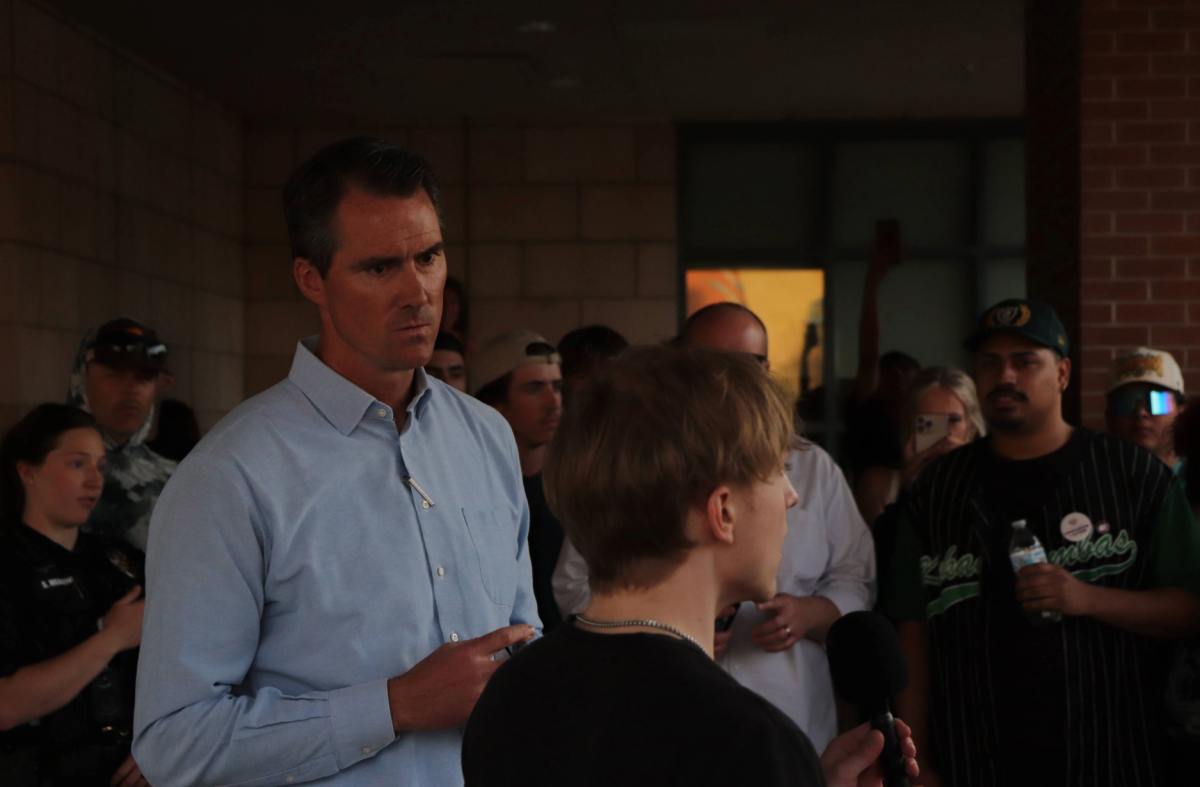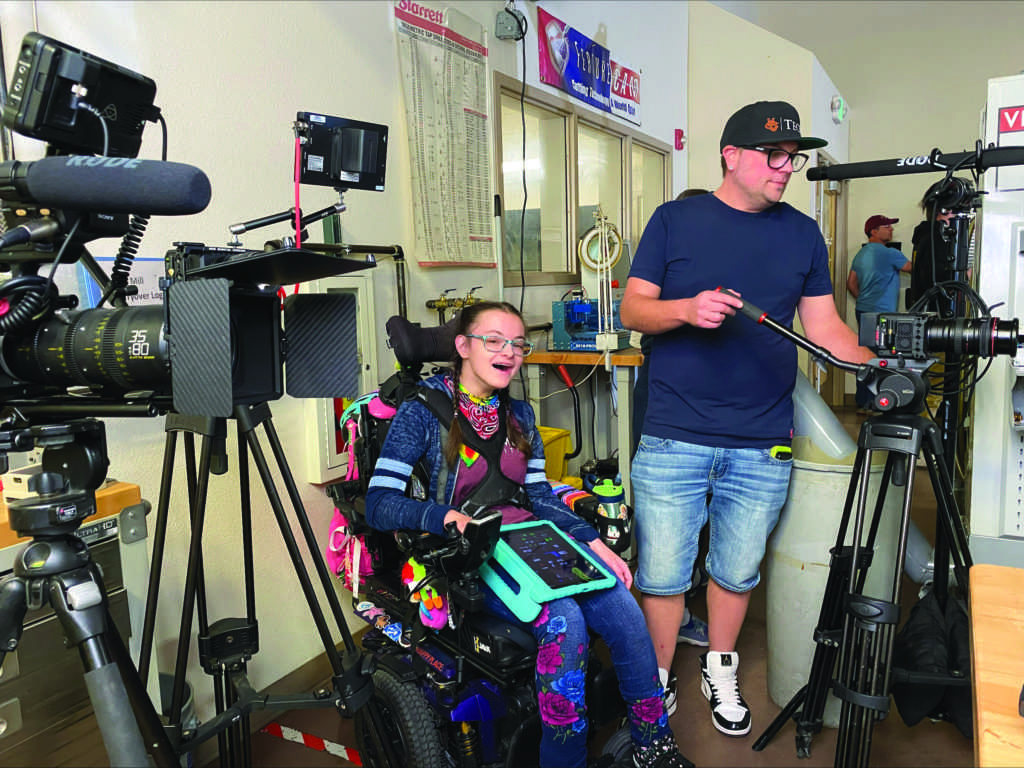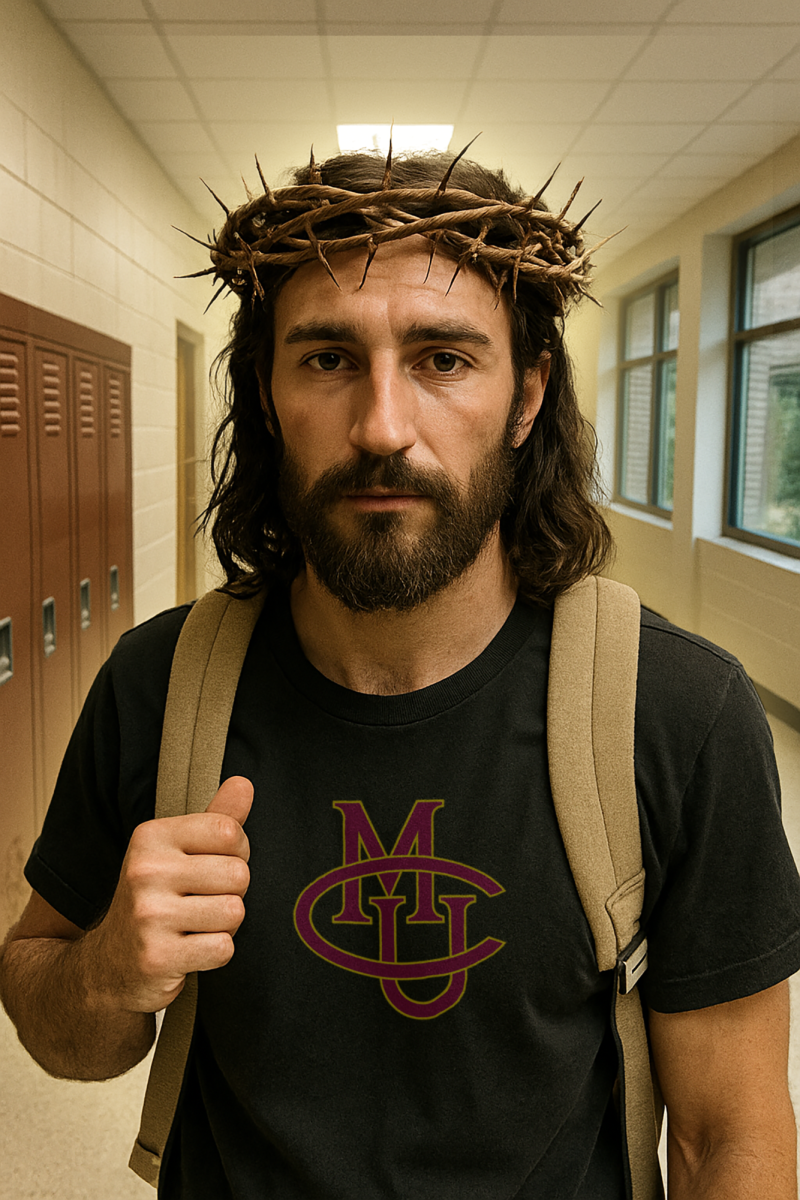Reports from the Colorado Mesa University safety alert system were delayed by a software glitch during the active shooter situation that turned out to be a false alarm on Feb. 25.
The safety alert system is designed to provide students with quick and accurate information regarding any potential threats to their safety that occur on or near campus.
While the false alarm itself was caused by a technical malfunction of the sound system, causing noises similar to gunshots to echo through Brownson Arena during a youth volleyball tournament, CMU students were not notified that the possible threat had even occurred and was a false alarm until 1:06 p.m.
According to GJPD Officer Stan Ancell, an off-duty officer present at the event was able to contact the dispatch and let them know there was no active shooter and no danger to the campus.
However, despite the fact that law enforcement had the situation under control in a matter of minutes, panic still spread across the CMU campus as students and staff saw people fleeing Brownson. With no official response from the CMU safety alert system, students did not know if the threat was real or not until more than an hour after the initial report.
According to Vice President of Student Services John Marshall, an initial warning message was not sent to students for two reasons. First, the threat was reported by locals at the event who were not university personnel, so CMU wasn’t aware of the threat until after law enforcement was.
The second reason was that law enforcement knew the threat was a false alarm before they came onto the scene, so there was no real danger to the campus.
“I think it was generally understood, by many, that there were no shots fired,” Marshall said regarding the situation in Brownson. “The problem is that people were scattering and yelling and running down hallways, ‘there’s a shooter,’ and that ripple effect and panic spread.”
Some students were rushed out of the University Center or hid in closets after hearing the initial reports.
Marshall said he was very happy with how quickly law enforcement responded to the situation and helped evacuate Brownson, and said that CMU had an accurate report confirming there was no shooter in approximately 20 minutes.
“All those things carried forward in what was not as timely as I would’ve hoped, but close. The responses were pretty good, the turnaround time was pretty good,” Marshall said.
However, a glitch in the safety alert software was responsible for the delay of the messages confirming the threat was a false alarm. Marshall said CMU has already worked with the vendor of the safety alert system, the GJ police and CMU IT to ensure that they understand what went wrong.
“We’ve worked with our vendor—both with police, the vendor, IT, to know exactly what happened, why it happened, so it never happens again,” Marshall said.
Tweets from Marshall and Editor in Chief of The Criterion Alec Williams confirmed the active shooter situation was a false alarm fifteen to thirty minutes before the response from CMU.
CMU student Emily Henthorn said she was not on campus at the time of the event, but lives right across the street. Henthorn’s dad sent her a news article about the event around 12:30 p.m. before she had heard anything official from CMU.
“I was really surprised because in the past CMU has been really good about sending out their safety alerts pretty quick. It took about another half hour before I got a safety alert text. It’s just disappointing it took so long. If I was a student who lived on campus, it would have been pretty scary not knowing what’s going on,” Henthorn said.
Henthorn was also concerned that the lack of response from CMU allowed panic and false information to spread across the campus.
Mikayla Martinez, another CMU student, was not only disappointed in CMU’s response time, but also in the fact that CMU didn’t send an initial warning message to students as soon as they were aware of a threat.
“As someone who works in a ‘big target’ area on campus, the library, it would’ve been nice to know that there was even reports of an active shooter,” Martinez said. “We could’ve helped those in our area, like how other retail places in the UC helped nearby students.”
Martinez called CMU’s lack of warning “completely unprofessional.”
“I would have rather been safe than sorry in this scenario,” Martinez said.
Marshall was optimistic that this situation would not happen again, and also encouraged students to take their safety into their own hands. He referenced an email that the campus sent Friday that provided instructions for what to do in an active shooter situation, as well as an instructional video.
“I think it’s important that we draw this distinction between a K-12 environment and a university environment. A university environment, for all intents and purposes, is treated just like a mall, or Main Street, or anything else in that you’re all adults, there’s no fence or wall around this place. And the best thing we can do as adults is equip ourselves with the best directives we have out of law training and research by the FBI,” Marshall said.
Marshall said that the university wanted to empower students to act as adults to make the best decisions possible. He acknowledged that the university has technology in place to assist students in staying safe—such as the automatic door locks on buildings and doors—but that a campus itself is not designed for protection.
“We have to acknowledge that this is a big, open adult environment, and it’s no different than if something happened at the mall. You wouldn’t expect the Buckle to keep you safe. You wouldn’t expect Victoria’s Secret to figure out how to save your life,” Marshall said. “There’s a certain expectation that the university it going to be as well-informed as possible, and utilize all the means at our disposal to keep people safe, and we are and have done that. There’s limits to that, and that’s where the instructional training videos come in.”














